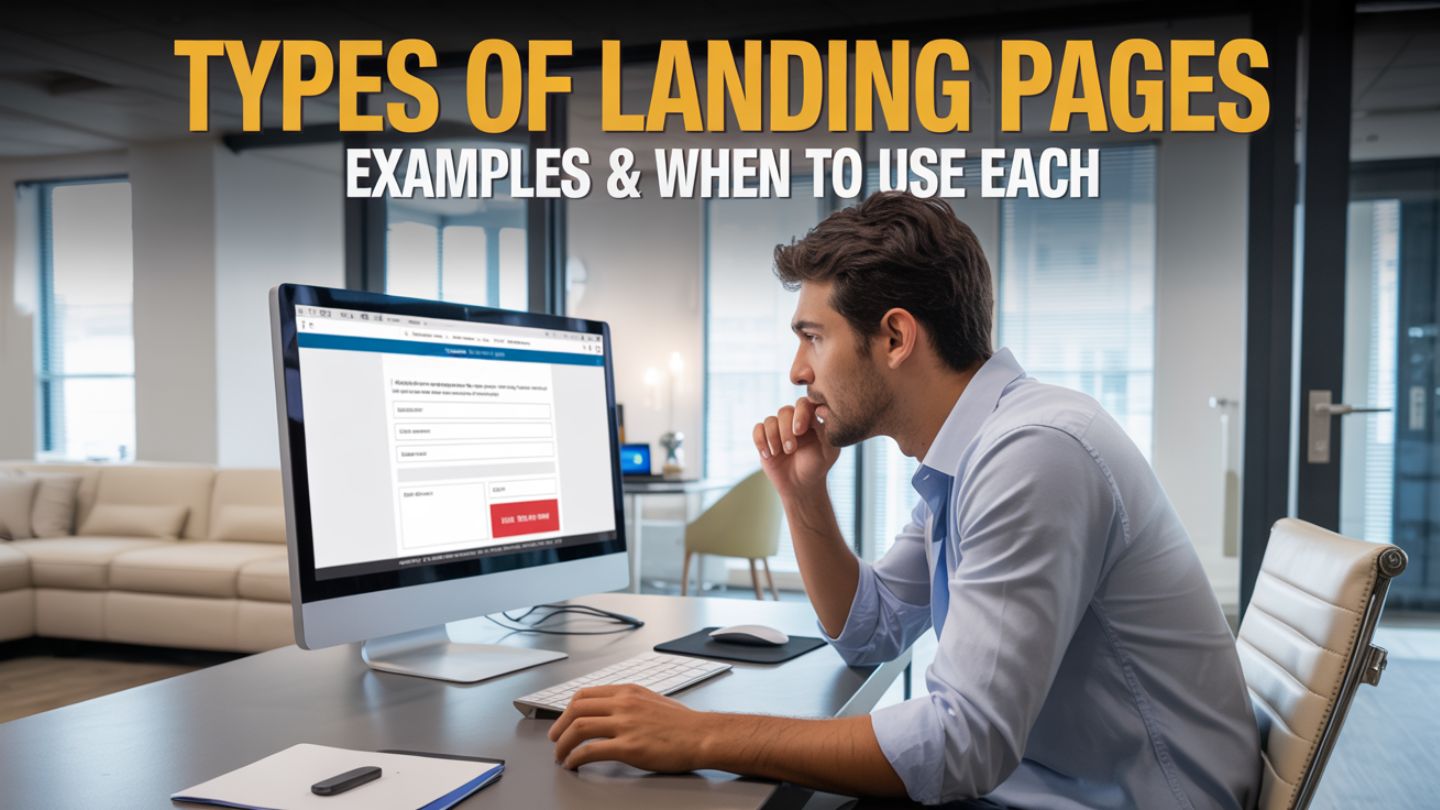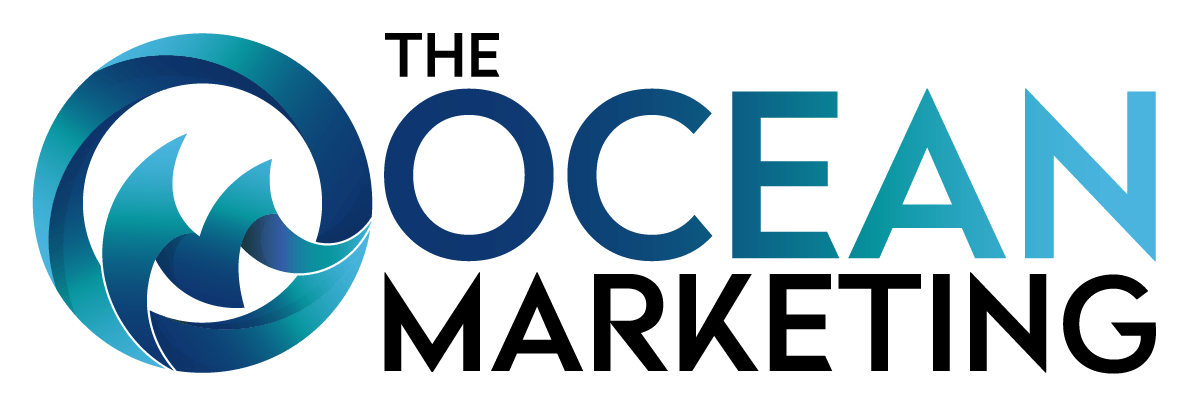
Landing pages are the cornerstone of effective digital marketing. Whether you’re driving paid traffic, promoting a product, or collecting leads, the right landing page type determines how well you convert visitors. Choosing the right one depends on your campaign goals, user intent, and what action you want visitors to take.
In this article, we’ll break down the most common types of landing pages, provide practical examples, and explain when each one performs best — helping you craft pages that deliver results for your campaigns.
1. Lead Generation Landing Page
A lead generation landing page (or “lead capture page”) focuses on collecting user data — usually through a form. These pages work best for campaigns offering something of value, like an ebook, free consultation, or trial in exchange for contact details.
Best used for:
- B2B campaigns
- Email marketing sign-ups
- Webinars and consultations
Example:
A marketing agency offering a free SEO audit could use a lead generation page featuring a concise form and a strong call-to-action (CTA). Optimizing this type of page requires understanding search intent and how users interact with form elements — insights you can strengthen by reviewing Googlebot behavior and crawl patterns.
2. Click-Through Landing Page
Click-through pages act as a bridge between an ad and the final conversion point. Rather than collecting leads immediately, they warm up visitors by explaining the offer in detail and guiding them to a purchase or sign-up page.
Best used for:
- SaaS or software trials
- Product demos
- PPC campaigns
Example:
A click-through page might present a limited-time offer for a new analytics tool. The page explains features, displays testimonials, and leads users to a final sign-up form. This type of page pairs well with campaigns using Pay-Per-Click marketing services.
3. Sales Landing Page

The sales landing page is designed to close deals. Unlike short-form pages, sales pages are detailed, persuasive, and often include storytelling, social proof, and pricing breakdowns.
Best used for:
- High-value or complex products
- Course and event sign-ups
- Product launches
Example:
A business selling online SEO courses might build a sales landing page highlighting course benefits, video testimonials, and a bold CTA like “Enroll Now.” Enhancing on-page elements such as schema and anchor text can help improve search performance.
4. Squeeze Page
A squeeze page is a minimalist version of a lead generation page, aiming to quickly capture email addresses. It usually has one clear headline, a short benefit statement, and a single form field.
Best used for:
- Email list building
- Early-stage campaigns
- Time-sensitive offers
Example:
A “Join Our Newsletter” pop-up page promising exclusive SEO insights is a squeeze page. Keeping it simple improves conversions while reducing bounce rates. If your bounce rate is high, review these reasons your website can have a high bounce rate to improve engagement metrics.
5. Product Detail Landing Page
This type of landing page is built for eCommerce and focuses on one product or offer. It showcases images, pricing, and features while using strong CTAs like “Add to Cart.”
Best used for:
- Online stores
- Product launches
- Seasonal promotions
Example:
An eCommerce brand promoting a summer product line can create a dedicated landing page optimized with product schema and relevant visuals. Incorporating shopping graph optimization strategies can boost visibility across Google’s product surfaces.
6. Splash Page
A splash page acts as a brief introduction — often appearing before users enter the main site. It’s used for announcements, promotions, or age verification, not conversions.
Best used for:
- Limited-time promotions
- Event announcements
- Age or region restrictions
Example:
A brewery website may show a splash page asking visitors to verify their age before entry. This page isn’t about conversion but user filtering and brand experience.
7. Microsite Landing Page

A microsite is a standalone mini-website built for a specific campaign or product. It includes multiple pages and interactive elements, offering a deep-dive experience.
Best used for:
- Product launches
- Multi-channel marketing campaigns
- Brand storytelling
Example:
A company introducing a new AI-powered marketing platform can use a microsite with explainer videos, comparison charts, and testimonials. It also helps reinforce credibility through internal linking and engagement metrics. To monitor how such campaigns affect rankings, and get updates on recent ranking changes on websites, and learn to interpret fluctuations accurately.
8. Thank You Page
Often overlooked, a thank you page appears after a user converts — submitting a form, downloading an asset, or making a purchase. It confirms the action and offers the next step, such as following your brand or exploring more content.
Best used for:
- Post-conversion engagement
- Upselling and cross-selling
- Tracking conversions
Example:
A thank you page might invite users to read additional SEO insights after signing up for a webinar. Linking to helpful posts like Google ranking factors that really matter or SEO lead conversion strategies extends engagement and increases authority signals.
How to Choose the Right Landing Page
Selecting the right landing page depends on your campaign objective:
- Use lead generation and squeeze pages for list building.
- Choose click-through or sales pages for direct conversions.
- Opt for microsites when showcasing complex products or campaigns.
- Don’t forget thank you pages to enhance user retention.
Also, ensure technical SEO foundations — like correct canonical URLs, sitemap structure, and crawl accessibility are solid. These elements, discussed in technical SEO audits, can dramatically improve how your landing pages perform in search results.
Final Thoughts
Each landing page type serves a distinct purpose in your marketing funnel. By aligning design, content, and user intent, you can guide visitors toward meaningful actions — whether that’s subscribing, purchasing, or learning more about your services.
For expert help crafting high-performing landing pages and SEO-driven campaigns, connect with the specialists at the Ocean Marketing. If you’re ready to transform your traffic into leads and revenue, contact us today.

Marcus D began his digital marketing career in 2009, specializing in SEO and online visibility. He has helped over 3,000 websites boost traffic and rankings through SEO, web design, content, and PPC strategies. At The Ocean Marketing, he continues to use his expertise to drive measurable growth for businesses.

